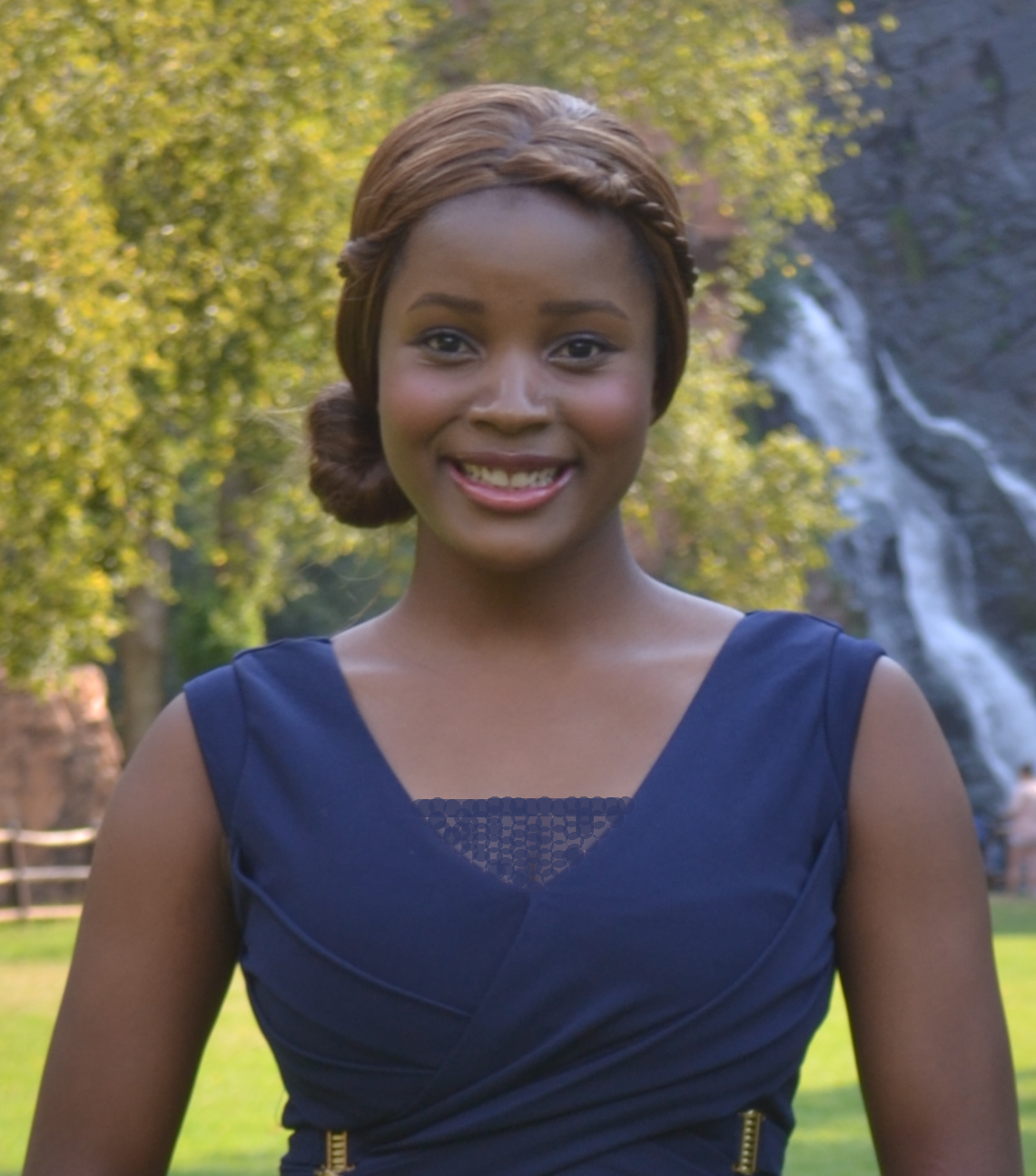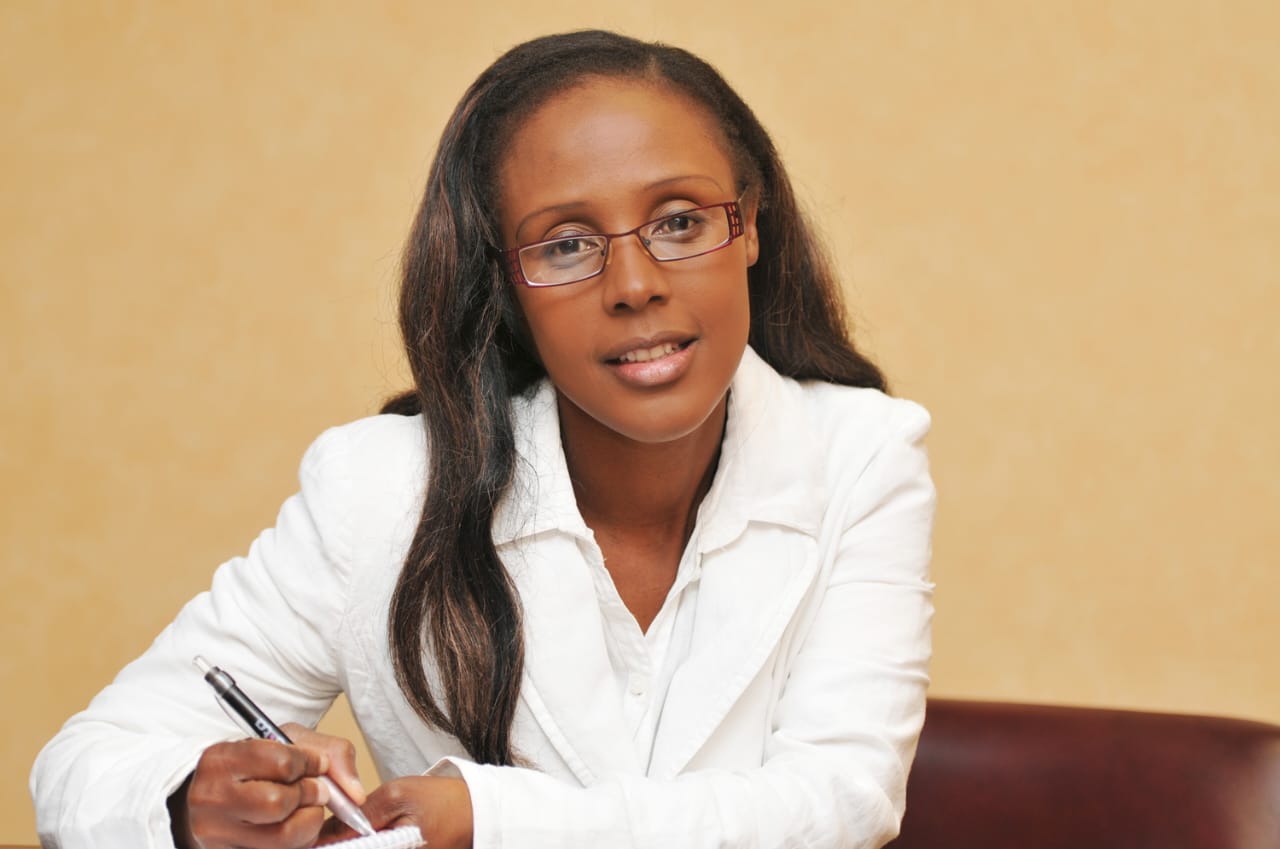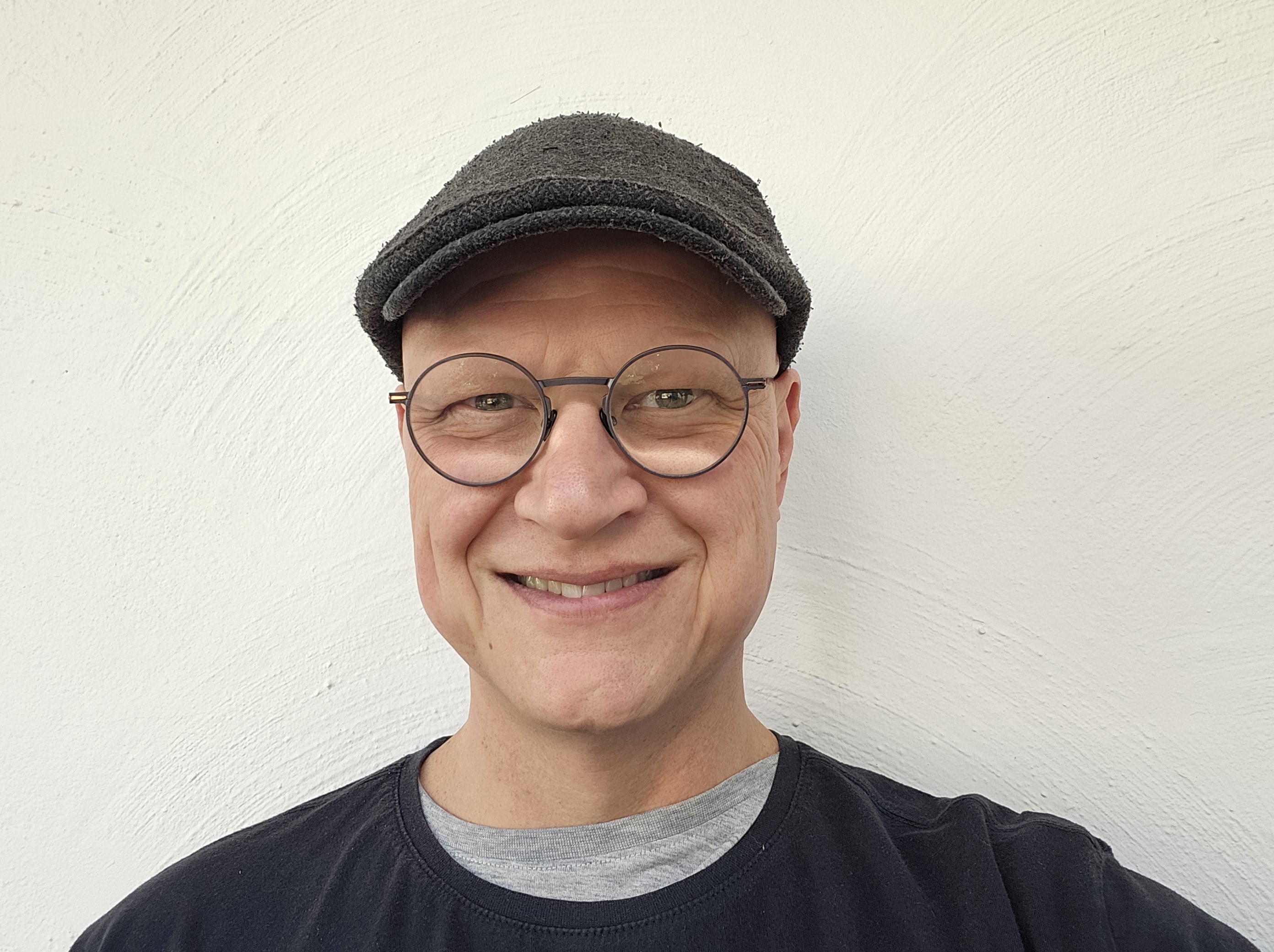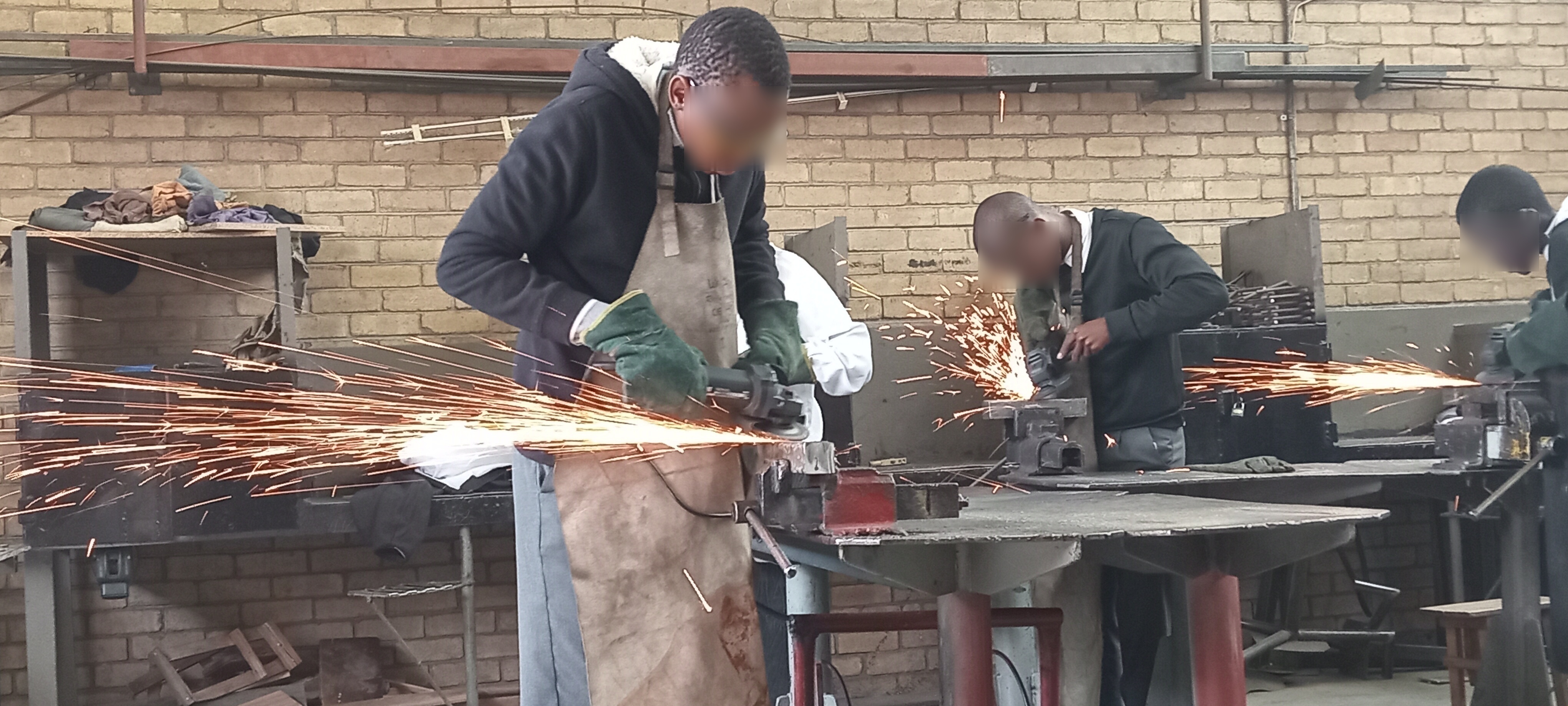
Without electricity, pupils with disabilities are deprived the right to skills training. Photo: Ntokozo Abraham/SAAJP
Eskom, the Minister of Department of Basic Education (DBE) and Minister of Department of Electricity and Energy (DEE) moved swiftly two weeks ago in response to the exposé of the huge, rising and erratic bills that have been strangling the country’s special schools for the blind, deaf and pupils with different disabilities.
The three state entities met on 8 September in response to Diary Series of Deaf People’s investigative story published on 7 September - produced by the SA Accountability Journalism Project - on how these costs meant that deaf and blind pupils could not get essential learning equipment as their grants were being swallowed up by huge electricity costs.
Following the investigation and reportage, DBE Minister’s spokesperson Lukhanyo Vangqa said the department will be running a programme at the end of the year in conjunction with Eskom and the DEE to review the accounts and ensure schools are on appropriate tariffs, and to install solar panels for the special schools.
Our eight-month investigation showed that at least one school was paying as much as R170 000 per month and that the amount did not go down during school holidays. Some schools were receiving bills that were impossible to understand. Installation of solar and gas power to curb the costs also proved unfruitful. The eight months investigation involved studying 188 bills from 66 schools in seven provinces: Limpopo, North West, Free State, Eastern Cape, Northern Cape, Western Cape and Mpumalanga.
Eskom had not responded to media enquiry after 50 days. After the story appeared on 7 September, on 8 September, Eskom and the DBE said a meeting was held with DEE to develop a plan to address the problem.
In agreement with Diary Series of Deaf People's findings, Eskom confirmed during a virtual call with our team on 12 September that one of the primary causes for large bills, even during times of low usage, is high Notified Maximum Demand (NMD) charges. NMD relates to the highest amount of electricity a customer is allowed to draw from the grid at any time without incurring penalties and is measured in kilovolt amperes (kVa). These are similar to the new connectivity charges homeowners who have fitted solar are facing.
Many schools are paying for connections in excess of 300kVa,
which is the equivalent of around 70 homes, but they only use a fraction of the
available capacity.
Vangqa said:
“The Minister of Basic Education held a long-scheduled
meeting with the Minister of Electricity to discuss the deployment of Eskom
solar panels to DBE schools. This initial meeting was exploratory in nature,
and it was to identify what would need to be in place for a project of this
nature to be undertaken. This relates to the technology, the financing of the
capital expenditure, the maintenance of the infrastructure and also which
schools would be prioritised in the pilot phase. The meeting discussed special
school as being most in need and also discussed technical high schools as good
starting points in order to expose the learners to the technology for career
prospects. The departments are having ongoing discussions about this project
and when a decision is made, the Ministers will publicly communicate that
decision.”
DEE Spokesperson, Tsakane Khambane confirmed the same: “Yes, the meeting took place on Monday [8 September] where Minister Ramokgopa met with his counterpart, Minister of Basic Education and respective teams as part of internal consultations to finalise on the project. More details will be shared when the project is finalised and launched in due course.”
Eskom said that it had begun a review of 14 schools data shared from Diary Series of Deaf People's investigation, and that it aims to review the accounts of over 400 special schools in South Africa.
Daphne Mokwena, spokesperson of Eskom said, “We are working with the DBE. We started on Monday [8 September] with our data teams to create our database of getting these schools identified. The department has provided us with a list [of special schools]. We are updating our data on that. So, each of these accounts will have to be reviewed one-by-one. For each one, we will have to look at what the needs are and what they are currently consuming and how best to service them.”
Many schools are on tariffs reserved for large demand users,
and Eskom confirmed that these accounts have customer executives assigned to
them. Even so, there is no automatic review triggered if a customer
consistently under utilises its connection, over a period of years, and could
save money by downgrading to a lower NMD.
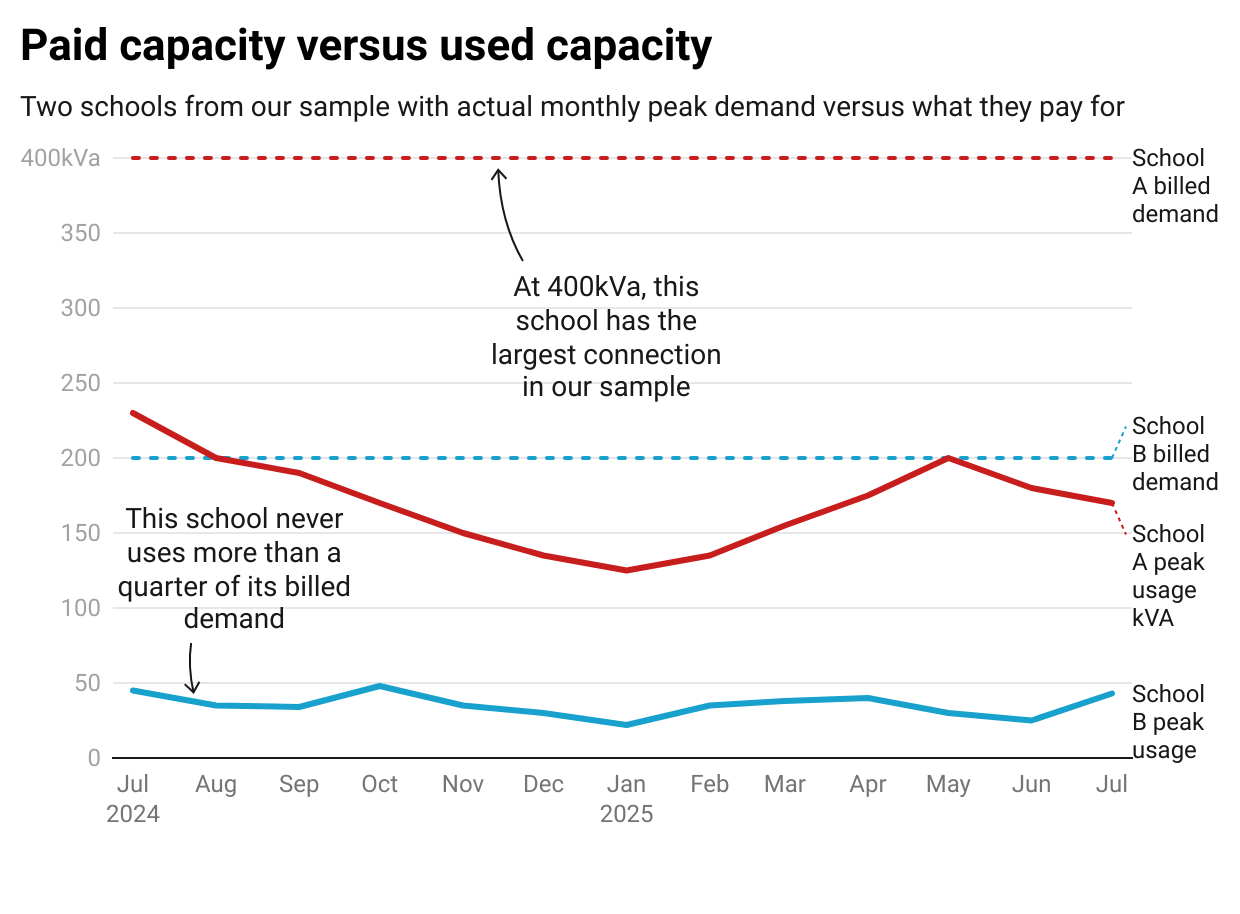
Source: Eskom
Mokwena said, upgrades or downgrades are not provided unless the special school requests, with the assistance of a customer executive. “We do not want to dictate to schools what they need in terms of power.”
Eskom explained that the NMDs currently being billed were decided by building contractors prior to schools taking ownership of their own finances when the schools had the opportunity to opt for lower tariffs.
Mokwena said:
“When the school is designated to be built, it is done so by
the contractor of the DPWI [Department of Public Works and
Infrastructure].
The contractor is the one who will apply to Eskom for supply of electricity,
and they would, at that stage, give a type of demand that would be at that
point of supply.”
She further explained, “Based on that demand, we would recommend which tariffs will be suitable for that customer. Once that school has been built and the account has been handed over, either to the DPWI or the school directly, that school would enter into a contract with us based on what has already been established in that point of supply. For example, if the contractor demanded a 200 notified maximum kVa but the school ends up only using 50kVa, we would only be able to determine the profile of that school once they have used sufficient amount of electricity over a period of time.”
Some of the schools interview said they have requested reviews and others kVa downgrades but have not received any help from Eskom. Bosele School for the Blind and Deaf in Limpopo explained that although they had looked into downgrading their tariff, they were informed by Eskom that it would cost them around R100 000 to downgrade, which is the same amount they pay monthly on electricity charges.
Mokwena said the high downgrade costs should only be charged if new equipment is required on site.
She said:
“In most of [Eskom’s] cases [of requests for downgrades],
they would be statistical downgrades and not asset downgrades. If you are
talking about reducing by 100kVa or so, that is just a statistical downgrade,
which doesn’t require any asset changes. If it’s a statistical adjustment,
then that means nobody has to go on site, therefore minimal fees are payable.
Here, we are not talking about over R100,000.”
Out of the sixty-six schools we investigated 24 are charged for over 100kVa peak usage per month. Fourteen of those get their power from Eskom, while others are billed by municipalities or, in four cases, Centlec – a government owned organisation. Many municipalities’ bills showed lower usage tariffs (measured in kilowatt hours) than Eskom, but much higher kVa charges - up to R60 000 a month.
Eskom said schools charged for over 100kVa are usually technical and agricultural schools. However, most of the special schools among the 24 are academic schools, such as Bosele School for the Blind and Deaf, Siloe School for the Blind, St Brandens Special School and North West School for the Deaf. Siloe School for the Blind pays Eskom over R35 000 a month for just 150kVa NMD, with metered usage in kWh on top.
Eskom said through reviewing the schools in our sample, they have realised that most of them need more than 50% of a tariff downgrade or capacity demand downgrade.
“That analysis [by the Diary Series of Deaf People] showed us that there are a number of schools that can reduce the demand by more than 50%. This would take them to a lower tariff or the same tariff but at a lower demand, which obviously in effect will reduce the demand charges.”
Centlec (SOC), and municipalities such as Maquassi Hills, Sol Platjie, Rustenburg and Polokwane Municipalities had not given clarity to the charges. Centlec on the other hand, sent a pile of documents stating they are addressing the media enquiry sent to them. Asked to unpack their documents as authors, they instead went mum.
Eskom said they intend communicating with the municipalities and Centlec in their endeavour to make reviews of the special schools’ tariffs.
Ntokozo Abraham is an economic and data journalist and Vicky Abraham is an investigative journalist of Diary Series of Deaf People (www.thedeafdiary.com) and Adam Oxford, a data journalist and founder of Area of Effect (areaofeffect.tv). This investigation is produced by the Southern Africa Accountability Journalism Project (SA|AJP), an initiative of the Nxumalo Foundation with the financial assistance of the European Union. It can under no circumstances be regarded as reflecting the position of the European Union.

